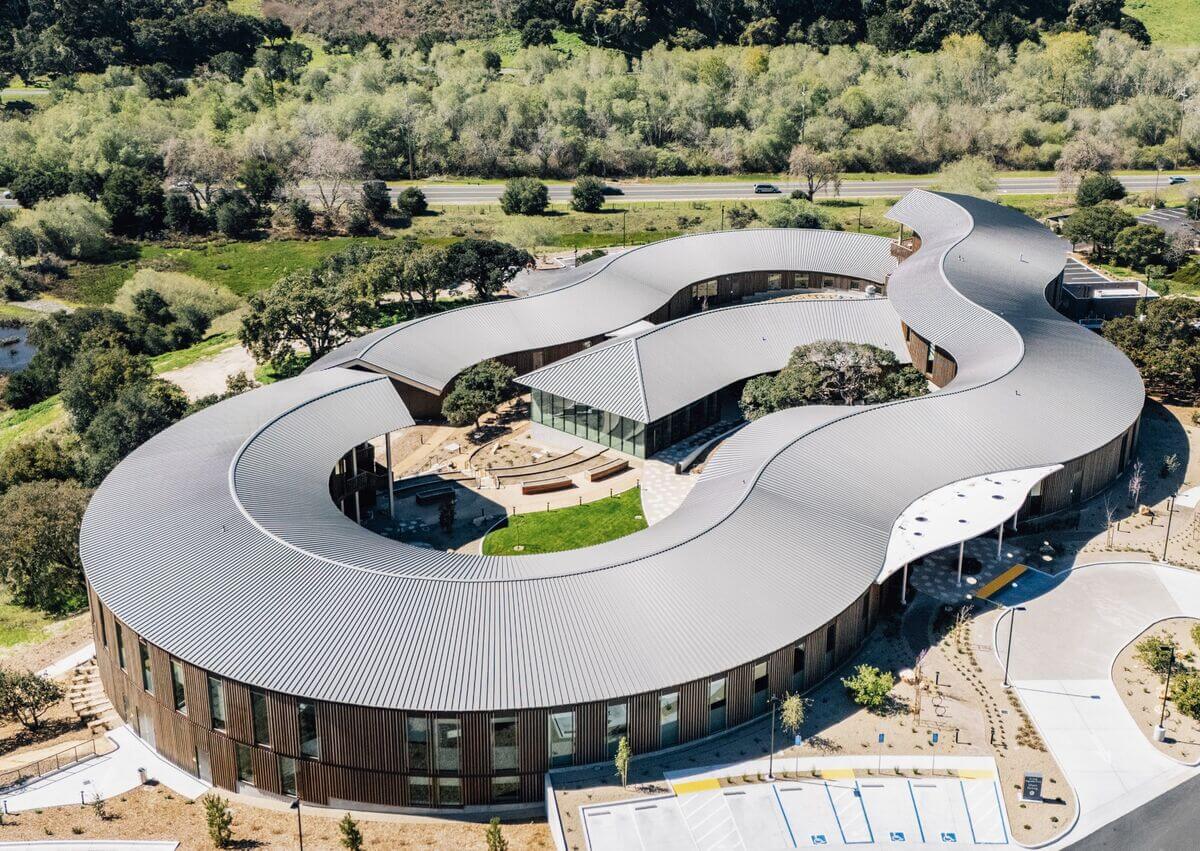Amid COVID, the World Health Organization (WHO) made an alarming discovery: Anxiety and depression rates skyrocketed by 25 percent during shutdown. Later, Dr. Anthony Fauci lamented over the pandemic’s longterm ramifications in the form of mental illness; especially for young people who were often more isolated than adults.
Today, one in five children in the U.S. experience a mental health disorder. This problem is worsened by a dearth of dedicated psychiatric beds, residential care facilities, and low amounts of funding for mental health programs.
But despite the odds, a new mental health treatment center designed by NBBJ for Montage Health in Monterey, California, marks a major step forward in addressing the crisis effecting so many adolescents. The haven is about 85 miles south of San Francisco on a bucolic hillside uniquely positioned to capture salty breezes from the nearby Pacific Ocean.
The Ohana Center for Child and Adolescent Behavioral Health opened its doors in November 2023. The 55,600-square-foot campus contains 16 beds, a basketball court, a dining area, flex spaces for music and individual therapy sessions, a verdant courtyard, and so much more. Certainly, the mass timber structure represents a radical deviation from the prison-like mental health facilities of years past we’ve become accustomed to in films like One Flew Over the Cuckoo’s Nest or Shutter Island.
Kid Friendly
At Ohana, instead of padded walls; dim, flickering lights; windowless rooms; fences, and gates; the new building by NBBJ prioritizes openness, light, and nature. And rather than glum ceramic tiles, Ohana uses natural materials, like cross-laminated timber, that spark joy and a sense of calm.

The building was paid for with a generous gift from Roberta “Bertie” Bialek Elliott, Warren Buffet’s sister. To ensure patients get top notch service, a majority of funding went toward care instead of architecture, although the design certainly doesn’t compromise on quality. This was achieved by using prefabricated exterior components and simplified building elements.


Extended Family
In plan, Ohana (which means “extended family” in Hawaiian) is shaped like an oblong donut. The serpentine configuration affords sweeping views of an idyllic hillside surrounded by oak trees. A shared courtyard creates opportunities for communal healing, and simply taking in a cool breeze. All in all, the design is meant to provide a restorative experience for children, teens, and caregivers, NBBJ said; the center is about healing instead of isolating.


Ohana’s design thinking was fueled by Dr. John Medina, NBBJ’s in-house fellow that specializes in neuroscience. Dr. Medina suggested floor-to-ceiling views, expansive porches, fragrant plants like lavender, winding pathways, and fitness areas to promote the restorative benefits of exercise. The building also features artworks by over 160 visual artists, poets, and student photographers.

“The building itself becomes an element of our prevention program,” said Dr. Susan Swick, executive director at Ohana. “It creates a sense of possibility, of hope, and the ways in which mental health must be built. Mental illness must be treated and its curable. But it must be built. The building itself is a reminder, a promise, and a facilitator.”

